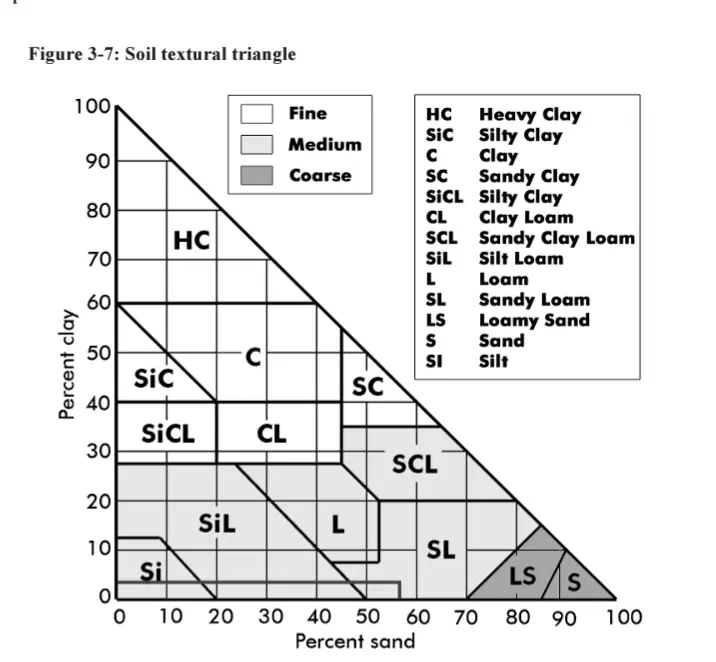I don’t understand how to read the top one.
So the “a” in “loam” in the middle-bottom, it’s at an intersection of 3 lines. If I follow those lines to each side I see that loam is 60% clay, 40% silt, 60% sand, and 40% sand.
Ok, maybe I’m not supposed to follow the grey lines, but the cardinal directions? To the left, loam is 20% clay, to the right 80% silt, and below 50% sand.
The more I try to understand this chart the more confused I get.
Follow the orientation of the numbers. On the left, horizontal lines. On the bottom SE to NW lines (\) On the right, NE to SW lines (/)
So, loam is 20% clay, 40% sand, 40% silt.
How come clay isn’t 100% clay?
It has to do with classification of the soil type. Soils with high clay content function similarly in regard to the soil chemistry and in most fields: hydraulic flow. Soils with such a clay component to be designated as just “Clay” will have consistent structure characteristics and act as a restrictive layer.



